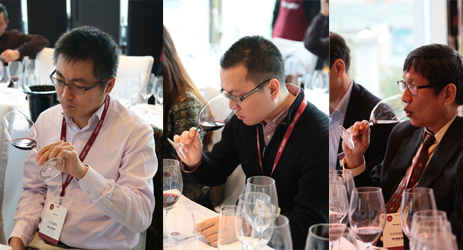Wine basics from the Chinese MW
This is the time of year when the trade makes their annual pilgrimage to Burgundy to taste the new vintage. I was in Beaune briefly last week and will return next week to finish what I started-tasting the 2014s.
Instead of writing about the new vintage, I have a bugbear that I must address. Several bottles of red Burgundy that we attempted to drink with meals were sorrowfully ruined by brettanomyces (Brett).

Brett is a sturdy yeast able to thrive in both aerobic and anaerobic environments at wine alcohol levels with little sustenance. Reds are particularly at risk due to their pH levels and use of oak (where Brett can live). It is responsible for off-aromas ranging from spice and smoke to animal, specifically horse. One of our Burgundy winemakers amusingly used the term ‘pony’, pronounced "po-neh" in his French accent to describe Brett.
Some argue that a little Brett adds complexity, but the question is how much is a little? One cannot control how much Brett to leave in the wine nor how it will grow in the bottle (it can get worse with time, so collectors beware). Furthermore, perception thresholds differ from person to person. While I may not always get Brett off-aromas on the nose, when the palate fruit is dull and the wine abnormally dry, I become most miserable.
Also read: [Andrew Jefford] Yeast: call me dad
Unfortunately, Pinot Noir is particularly sensitive and a little Brett will ruin its delicate fruit, perfume, and therefore, its sense of place, as it does for all infected wines. (Please note that Brett can be found in any wine and is not just limited to Burgundy.) Fortunately, Brett can be eliminated by practicing good hygiene in the winery, especially for oak barrels; using adequate SO2; and filtering or adding of DMDC* (dimethyl dicarbonate) prior to bottling.
I was most surprised to hear from an accomplished Burgundian winemaker that many winemakers are unaware, cannot detect and do not know how to get rid of Brett. The lack of awareness is a real issue, therefore I am drawing attention to it by openly writing about it.
*DMDC is a food additive that is also used in fruit juices, ice teas, sports drinks and carbonated beverages as a preservative and sterilant. In wine, it breaks down to methanol and carbon dioxide, both also naturally occurring in wine.
Translated by Sylvia Wu / 吴嘉溦
All rights reserved by Future plc. No part of this publication may be reproduced, distributed or transmitted in any form or by any means without the prior written permission of Decanter.
Only Official Media Partners (see About us) of DecanterChina.com may republish part of the content from the site without prior permission under strict Terms & Conditions. Contact china@decanter.com to learn about how to become an Official Media Partner of DecanterChina.com.









Comments
Submit